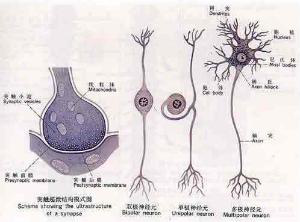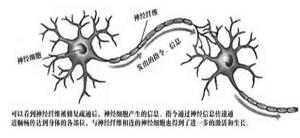- 中文
- 繁體
- 日本語
- ???
- Espa?ol
- ???????
- ???????
- русский
- fran?ais
- Italia
- Deutsch
- Português
- Ti?ng Vi?t
- Bahasa Melayu
- Polski
- Svenska
- Norsk
- l?tzebuergesch
- Bahasa Indonesia
- Ελληνικ?
- Suomi
- Dansk
- ?e?tina
- Nederlands
- Български
- Roman?
- Magyar
- lietuvi? kalba
- latviski
- Eesti keel
- Hrvatski
- Slovensky jazyk
- Sloven??ina
- ?????
- ?????
- Укра?нська
- ?????
- íslenskur
- Српски
- Català
- ????????
Neuroacid
1. What is neuraminic acid?
Nervonic Acid is scientifically known as 15-tetradecenoic acid, with a molecular formula of C24H46O2 and a molecular weight of 366.6. The pure product is a white needle-shaped solid at room temperature. It is a ω-9 type long-chain monoolefin fatty acid. Because it was first extracted from the brain of turtle fish, it is also called turtle acid.
Nervonic Acid is a core natural component of brain nerve fibers (white matter) and nerve cells (gray matter). It is difficult for the human body to produce neurvonic acid on its own and can only be supplemented by external intake.
Neuroacid is recognized by scientists from all over the world as the world's first and only dual-effect magical substance that can repair and clear damaged brain nerve pathways - nerve fibers, and promote the regeneration of nerve cells.
2. Development of Neuroacid
In 1972, British neurology professors Sinclar and Crawford discovered that sharks' brains can automatically recover soon after being severely damaged because a substance called "neuroacid" in the shark's brain tissue plays a magical role.

?
In 1986, Dr. Larkin, a famous American neuroscientist, conducted the most sensational experiment on "regeneration of brain nerve fibers for repair" that shocked the world.
The Human Brain Project, which was officially launched in the United States in 1997 and participated by more than a dozen countries and more than 20 famous universities and research institutes in the United States, is another epoch-making scientific project after the Human Gene Project. Among the several key research projects of the "Human Brain Project", neuronic acid was selected as the key research topic of the plan because of its unprecedented magical function. The discovery of neuronic acid has completely found the root of the treatment of brain diseases; it has walked out of the misunderstanding of only targeting brain cells and ignoring the repair and dredging of nerve fibers in the past, and has ushered in a new era of brain disease treatment. The world-renowned academic journals such as "Nature Science" and "Trends in Neuroscience" have published a series of highly praised reports. Abroad, scientists first extracted trace amounts of neuronic acid from shark brains for scientific research. Due to the international community's ban on killing sharks, the source of neuronic acid is in a desperate situation. Nervonic acid (Nervonic Acid) is the core natural component of brain nerve fibers (white matter) and nerve cells (gray matter). Brain nerve cells (gray matter) are responsible for receiving information and issuing instructions; nerve fibers (white matter) are responsible for transmitting information and instructions. If nerve fibers are diseased or blocked, the instructions issued by nerve cells cannot be transmitted. Old instructions are accumulated for a long time, and new information cannot be received, which eventually leads to the misalignment of nerve cells and command failure. Traditional brain disease treatment only focuses on the activation and recovery of brain cells, and ignores the dredging and repair of nerve fibers responsible for transmitting information and instructions. As a result, the patient's mind (brain) understands everything, but his mouth, arms, legs, feet, urination and defecation do not obey the command.
The latest research results in international brain science: Brain disease treatment must adopt the 1+1 therapy, that is, brain nerve cells and nerve fibers must be treated at the same time. Only a two-pronged approach can brain disease be conquered.
3. Three major functions of neuraminic acid
1. Repair and dredge the "highway" for nerve information transmission - nerve fibers, so that the "brain road" is unblocked:
Neuroacid can directly act on the damaged "highway" of nerve information transmission - nerve fibers, regenerate the myelin sheath that has fallen off, repair damaged nerve fibers, activate the ERK conduction pathway of nerve fiber information and Ephrin signaling molecules, dissolve the necrotic tissue blocked in nerve fibers, thereby increasing the conduction speed and ensuring the integrity of information conduction, and restoring the smoothness of various nerve information conduction channels. Neuroacid is used to activate the diseased nerve cells before repair.

?
2. Repair damaged brain nerve cells:
After the nerve fibers are repaired, information transmission is accurate and fast, thereby activating the neuronal cell adhesion molecule (NCAM); the adhesion molecule focuses on repairing the damaged parts, thereby promoting and improving the function of damaged nerve cells, increasing the entry of nutrients, reversing the degeneration of nerve cells, preventing the death of nerve cells, and reviving damaged nerve cells. It restores the ability of damaged nerve cells to receive stimulation, conduct impulses, integrate information, and remember information; it effectively restores memory dysfunction, limb movement disorders, paralysis and other symptoms caused by damage to nerve fibers and nerve cells.
3. Comprehensively promote brain nerve regeneration. Whether nerves can regenerate is controlled by the nerve regeneration gene code. Damage to nerve fibers will cause the gene fragments to temporarily or permanently lose their functions, and the regeneration code cannot be opened.
Neuroacid repairs nerve fibers and activates nerve cells. Just like a precision missile equipped with a strict program, it can accurately and automatically identify and activate the AT and C-G gene expression systems on the DNA chain that control the promotion of nerve regeneration, thereby opening the nerve regeneration code on the gene system, promoting the regeneration of repaired nerves, regenerating new branches and lateral buds, and proliferating and differentiating in large numbers, and restoring part or all of the patient's functions in language, memory, sensation, limbs, etc.
Four, six major effects
1. Stroke: Repair and clear nerve fibers, activate nerve cells, restore the brain's control over the limbs, language, memory, and face, eliminate sequelae such as hemiplegia, numbness of limbs, slurred speech, etc. caused by cerebral stroke, and achieve independent standing and walking.
?
2. Alzheimer's disease: Enhance the energy of brain cells, promote cell proliferation and differentiation, prevent aging and damage of brain nerve cells; restore the brain's clear cognition, discrimination ability, learning, thinking and memory functions, and effectively prevent and treat Alzheimer's disease and other diseases.
3. Cerebral palsy: Promote the growth and development of brain tissue and improve its functions, effectively improve the brain's intelligence and reaction speed, enhance self-movement and sensory functions, and realize the self-reliance and learning ability of children with cerebral palsy.
4. Parkinson's disease: Stabilizes the nervous system, eliminates involuntary tremors of the limbs, restores the body's flexibility, agility and balance, makes autonomous actions stable and powerful, and prevents and treats Parkinson's disease and other diseases.
5. Brain atrophy: Inhibit the degeneration and decline of brain nerve fibers and nerve cells, promote the recovery of brain damage, and prevent the collapse, atrophy and hardening of brain tissue.
6. Delay brain aging: Improve brain blood circulation, ensure adequate supply of blood oxygen to brain cells, and prevent brain aging.
V. Related Materials
1. Related books: Neuroacid and Brain Health
2. Related manufacturers